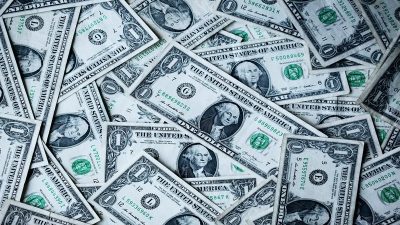
CIO Viewpoint: Inflation Nation

Global fiscal stimulus totaling more than 8 trillion dollars has resurfaced chatter of inflation and its resulting impact on the global economy and asset prices and yields. In addition, coordinated action with central bankers, who are providing liquidity and extending credit has broadened the rhetoric about inflation expectations. Complicating the equation are a simultaneous global supply and demand shock, which have upended traditional economic forecasts. Furthermore, both the European Central Bank (ECB) and the US Federal Reserve (Fed) are in an ongoing effort to study the effects of their policies on the economy.
In our analysis, we assume that central banks will continue to be accommodative. We also assume fiscal support will remain an option on the table of policymakers. In the near term, however, the massive war-time like fiscal stimulus will likely be deflationary to prices due to the temporary absence of demand. Longer term as aggregate demand returns to normal, it’s likely that moderate but low, in absolute terms, inflation will return. However, developed market central bank action will likely be framed by a more flexible inflation mandate which will be led by the US Federal Reserve.
The Aggregate Supply and Aggregate Demand Equation
Government ordered shutdowns and shelter-in place protocols have severely impacted consumer spending habits. In March, retail sales in the US were down 8.7% from February as consumers reduced spending on clothing (-50.5%) furniture (-26.8%) and restaurants and bars (-26.5%) but increased spending on categories such as grocery stores (+25.6%) and health and personal care (+4.3%). Couple this with a supply chain disruption at factories that can no longer produce product, due to stay-at-home orders for factory workers, the supply shock has also shifted the equilibrium of the supply and demand curves on the price and quantity chart.
While overall we expect the recovery to be fragile and slow, albeit ‘U’ shaped, some sectors, such as energy, travel and leisure could see lasting deflationary pressures. While food and beverage for example could see temporary inflationary support due to a likely transitory imbalance between supply and demand in the interim.
Consumer Income
Importantly, personal income, wage growth, average hourly wage and fundamentally, employment, are inputs for evaluating the supply demand curve. Policy support in the US through programs that intend to keep employees on businesses payroll such as the Payroll Protection Program (PPP) are supportive of keeping the demand line aloft. This is an attempt to prevent mass layoffs and to avoid a shock spike in unemployment followed by a loss of consumer’s income and a potentially permanent drop in demand due to lower consumer confidence because of expectations of a weakening economy. European countries have a more resilient social welfare system built into fiscal budgets, not to mention more rigid employment regulations, and thus are facing stronger deflationary forces due to less focus on employee related provisions in individual country’s fiscal plans. However, in the US, helicopter money direct deposited to bank accounts or unemployment benefits for those eligible, should tame a dramatic move down the slope of the Philips Curve and thereby could be supportive for prices in the near-term. Nevertheless, the effect of these levers may not last long given the broader macro-economic outlook that forecasts a deep but short global recession.
Energy
Traditionally commodity prices have had a somewhat correlated effect on inflation because of oil’s integral part to global trade. In the US, the energy index, a component of the Core Consumer Price Index (CPI), declined 5.8% in March and the gasoline index decreased by 10.5%. Gas pump prices have fallen to US$ 1.77 according to AAA, from a year ago average of US$ 2.88, in large part due to lower oil prices brought on by excess supply.
The economic shutdown in China in February reduced China’s demand for oil. China is a net crude importer. In addition, supply cuts were not as forthcoming from OPEC+ due to a disagreement between Russia and Saudi Arabia. Compounding matters, airlines quickly grounded their oil consuming fleets and cruise line companies cancelled sailings both of which reduced global demand for oil and its derivatives.
It’s very difficult to forecast the direction of oil supply and prices. OPEC is known to be very secretive, and a geopolitical spat between Russia and Saudi Arabia are adding volatility to the market. Generally, we feel that the long term demand for oil and its derivatives is likely to decline due to several trends: green/plastic free revolution, aim to reduce carbon emissions, and the increase of R&D for non-fossil fuel. Nevertheless, energy prices will likely continue to contribute to volatility in inflation readings in the interim. However, practically, lower gas pump prices are a deflationary force on CPI data.
Fed of the Future: Average Inflation Targeting
The US Federal Reserve is mandated for two objectives: (1) maximizing employment and (2) stable prices. The concept of average inflation targeting has been a theory for years but has only become under more serious consideration since mid 2019 in response to the US economy notoriously under achieving the Fed’s target inflation rate of 2%, which was officially set in 2012 and unofficially in 1996. This follows the standard inflation targeting era of the 1970s and 1980s. At the time, it was a generally successful method to control high and volatile inflation. Coincidentally, the ECB’s target is also “below but close to 2%” since 2003.
While the Fed unofficially set a 2% target in 1996, technology is playing an increasing and greater role in the makeup of US economic growth. As such, the consensus view is that the neutral (real) interest rate is lower now that it had been then. This consequently limits the Fed’s ability to adequately cut rates because the margin of flexibility to cut is less than it had been, especially if nominal rates are zero, as they are now. We think the Fed is now enabling an additional tool in their toolbox given the change in circumstances.
The concept of average inflation targeting uses past and present data that over a given time period include expansion and contraction periods of the economic cycle. Ultimately, the Fed tries to manage inflation expectations during and following a given cycle by communicating its goal of where it’d like inflation to be or headed. In periods where inflation had been below target such as the “asymmetric 2%”, it could communicate its aim for higher inflation after a low inflation period, something it does not do now. Bygones are no longer bygone under this more flexible inflation targeting approach. In effect it might leverage this tool to maintain stable prices, rather than relying on the discount rate to manage inflation expectations. Essentially it is expected that the Fed may now consider past periods than let those past cycles simply be a historic data point. It’s not a case of whether the Fed will lower or raise rates to manage inflation to discrete target, but it’s a case of how the Fed will communicate inflation expectations within a grounded economic concept. The Fed learned this lesson after the standard inflation targeting era of the 1970s and 1980s. Effective communication from the Fed has always been a concern and they constantly look for ways to best convey their views within their mandate. We think this ultimately gives the Fed latitude in their enormous and dynamic toolbox in times of stress.
All About Expectations
To-date, announced plans for an increase in spending by fiscal policy makers and in lending by central bankers in aggregate is far in excess of that during the 2007-2009 Global Rescission (Global Financial Crisis) have precipitated the idea that inflation will inevitably rise, finally. In fact, the US M2 rate, a measure of financial assets by household, spiked by approximately US$1.2trn, an increase of approximately 7.6%, since early-March. It’s the steepest recorded. However, because of the simultaneous supply and demand shock coupled with lower oil prices, temporary payroll measures, easy credit and increasingly dim consumer outlooks we feel in the near to medium term there are likely to be some deflationary forces at work. In the longer term we expect the usual inflationary forces to return, but not to normal, due a broad ‘U’ shaped global economic recovery and the work through of fiscal spending programs at the tail that will ultimately be supportive of aggregate demand. Consequently, the Fed’s average inflation targeting research is likely to bear fruit and we may see more transparency around inflation expectations.
Sources: AAA, Bank of America Private Bank, Bank of International Settlements, Brookings Institute, Bloomberg, DBS, Federal Reserve Bank of New York, San Francisco and St. Louis, Goldman Sachs Investment Research, JP Morgan Investment Research, Reuters, TS Lombard, The New York Times, The Wall Street Journal and CIGP Estimates.


